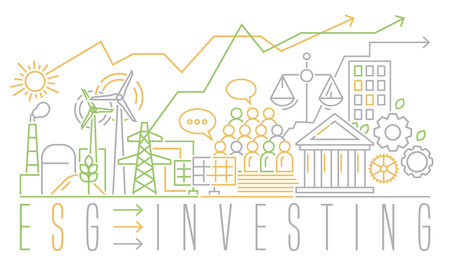Introduction to Investment Education Platforms
When it comes to learning about investing, Americans have more options than ever before. Two of the most popular routes are traditional education—like college courses and formal seminars—and modern online platforms, with YouTube leading the way. Each method has its own unique approach and appeals to different types of learners.
Main Ways Americans Learn About Investing
Let’s take a closer look at the main ways people in the U.S. typically pick up investment knowledge:
| Platform | Description | Common Examples |
|---|---|---|
| YouTube | Free video content from creators covering all levels, often using simple language and real-life examples. | Graham Stephan, Andrei Jikh, The Plain Bagel |
| Traditional Education | Structured lessons from accredited institutions or certified professionals, often for a fee or tuition. | College finance classes, university investment clubs, professional workshops |
| Other Online Resources | Websites, blogs, podcasts, and forums that offer investment tips and news. | Investopedia, Motley Fool, Reddit (r/investing) |
| Social Media & Apps | Bite-sized content and discussions on platforms like Twitter and TikTok; investing apps often provide educational tools as well. | TikTok “FinTok” creators, Twitter threads, Robinhood Learn |
YouTube vs. Traditional Education: A Modern Comparison
YouTube stands out because it’s accessible to anyone with an internet connection and offers endless free content. Viewers can find everything from basic “Investing 101” videos to deep dives into complex strategies—all delivered in a conversational style. On the other hand, traditional education usually provides a more systematic approach. Courses are taught by professionals with credentials and are designed to cover topics thoroughly, but they often require a bigger time commitment and cost money.
2. Advantages of Learning from YouTube
Flexibility That Fits Your Schedule
One of the biggest perks of learning about investing on YouTube is flexibility. Unlike traditional classes or workshops, you can watch videos whenever it works for you—late at night, during your lunch break, or even while commuting. You’re not tied to a set class time or location. This makes it easy for busy Americans to fit investment education into their everyday lives.
Easy Access for Everyone
YouTube is available to anyone with an internet connection. You don’t need to enroll in a college or pay expensive tuition fees to start learning. Whether you’re a high school student, a working parent, or someone who just wants to grow their savings, all you need is a smartphone, tablet, or computer. This kind of accessibility helps level the playing field for people from different backgrounds and locations across the U.S.
Comparison: Accessibility of Investment Education
| YouTube | Traditional Education | |
|---|---|---|
| Cost | Usually free | Often expensive (tuition, books) |
| Location | Anywhere with internet | On-campus or specific location |
| Schedule | Anytime, self-paced | Set times, fixed duration |
| Entry Requirements | No prerequisites | May require application or prerequisites |
Diverse Perspectives and Up-to-Date Content
YouTube hosts thousands of content creators—from finance professors and Wall Street pros to everyday folks sharing personal experiences. This gives viewers access to a wide range of opinions and real-life stories that textbooks may not cover. Plus, since videos can be uploaded instantly, you’ll often find content that discusses the latest market trends and breaking news faster than traditional courses can update their materials.
Examples of Diversity on YouTube:
- Step-by-step guides for beginners by everyday investors
- Market analysis from certified financial planners and analysts
- Personal finance tips tailored for young adults or retirees in the U.S.
- Case studies covering American companies like Tesla, Apple, and Amazon
This variety helps learners see different approaches to investing and pick up practical knowledge that matches their own goals and risk tolerance.

3. Drawbacks of Relying on YouTube
YouTube is packed with investment videos, but its important to know that learning about investing from YouTube comes with some real risks. Lets look at the main drawbacks you should watch out for.
Misinformation Is Everywhere
Unlike schools or official courses, anyone can post investment advice on YouTube—there’s no guarantee the information is accurate or up-to-date. Sometimes, creators might share outdated strategies or even spread myths just to get more views and subscribers. If you’re not careful, following this advice could actually hurt your finances.
Lack of Regulation and Oversight
Traditional education is regulated by state boards and accrediting bodies, so teachers are usually qualified and the material is checked for accuracy. On YouTube, there’s little oversight. This means:
| Traditional Education | YouTube |
|---|---|
| Qualified instructors | Anyone can give advice |
| Fact-checked material | No fact-checking required |
| Regulated curriculum | No regulation or standards |
The Hype Factor: Risk of Falling for Trends and Unqualified Advice
Many YouTubers hype up “hot stocks” or new cryptocurrencies to attract attention—even if these investments are very risky. Some people may not have any real credentials or experience but still present themselves as experts. There’s also a risk of pump-and-dump schemes, where creators promote an asset just to profit from it before it crashes.
How to Spot Red Flags on YouTube:
- Promises of quick, guaranteed returns (“Double your money in a week!”)
- Lack of clear credentials (no background in finance or investing)
- Pushing specific products or services aggressively (“Buy my course now!”)
- No mention of risks or downsides, only the positives
Bottom Line:
YouTube can be a great starting point for learning about investing, but it’s easy to run into bad information and unqualified advice if you don’t double-check what you hear. Always cross-reference tips from YouTube with trusted sources before making any big decisions with your money.
4. Benefits of Traditional Investment Education
When it comes to learning about investing, traditional education options like college courses, business school, and certification programs offer unique advantages that you might not find on YouTube or other online platforms. Let’s break down why formal investment education can be a great choice for many people in the United States.
Structured Learning Path
One of the biggest strengths of traditional investment education is its structured approach. Courses are designed by experts to cover topics in a logical order, starting from the basics and moving to more advanced concepts. This helps students build a strong foundation before diving into complex strategies. Here’s a quick comparison:
| Aspect | Traditional Education | YouTube |
|---|---|---|
| Learning Order | Step-by-step, organized curriculum | Randomized, based on search results |
| Progress Tracking | Clear milestones and assessments | No formal tracking or assessments |
| Depth of Content | Comprehensive and thorough coverage | Can be superficial or incomplete |
Credibility of Information
With traditional education, you can trust the information you’re getting. Colleges and universities must meet strict standards for their courses and often update their material to reflect current market trends. Instructors are usually experienced professionals or academics with deep knowledge in finance and investing.
Why Credibility Matters:
- Avoiding Misinformation: Unlike some online videos, school-based education is less likely to spread myths or outdated strategies.
- Peer Review: Course content is reviewed by multiple experts before being taught.
- Accreditation: Many institutions are accredited, adding an extra layer of trust.
Access to Certified Professionals and Networking Opportunities
Another big plus of formal investment education is direct access to certified professionals such as professors, financial advisors, and industry speakers. These connections can help you understand real-world applications and even open doors for internships or jobs.
Main Advantages Include:
- Expert Guidance: Get answers to your specific questions from qualified instructors.
- Mentorship: Build relationships with seasoned investors who can guide your career.
- Networking Events: Meet classmates, alumni, and professionals at seminars and workshops—something that’s hard to replicate online.
If you want a learning experience that is organized, reliable, and offers professional support, traditional investment education is worth considering. It provides a solid pathway for anyone serious about building long-term investing skills in the U.S.
5. Limitations of Traditional Education in Investing
Traditional education, such as college courses or certification programs in investing and finance, has long been considered a solid way to gain knowledge. However, it also comes with its own set of challenges that might not fit everyones needs—especially when compared to learning from dynamic platforms like YouTube.
Higher Costs
One of the most noticeable drawbacks is cost. Enrolling in university courses, attending seminars, or pursuing professional certifications often requires a significant financial investment. This can include tuition fees, textbooks, and even living expenses if you’re attending in person. For many people just starting out or those on a budget, these costs can be a real barrier.
Less Flexibility
Traditional education usually follows a fixed schedule. Classes may be offered at specific times and locations, which can make it tough for people who have jobs, families, or other commitments. In contrast, online resources like YouTube allow learners to access content whenever they want and from wherever they are.
Slower Updates and Response to Market Trends
The world of investing changes fast. New trends emerge, regulations shift, and technology evolves. Traditional curriculums often take time to update because they need approval from educational boards and instructors must adapt their materials. As a result, students might end up learning outdated concepts or missing out on recent developments.
Quick Comparison: Traditional Education vs. YouTube Learning
| Aspect | Traditional Education | YouTube Learning |
|---|---|---|
| Cost | High (tuition, materials) | Mostly free |
| Flexibility | Fixed schedule/location | Learn anytime/anywhere |
| Update Speed | Slow (curriculum lag) | Fast (real-time updates) |
| Personalization | Standardized approach | User-driven content selection |
Summary of Key Shortcomings
If youre considering how best to learn about investing in the U.S., its important to recognize that while traditional education offers structure and credibility, it may not always keep up with the rapid pace of change or offer the same convenience and affordability as newer platforms like YouTube.


